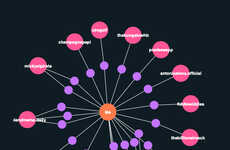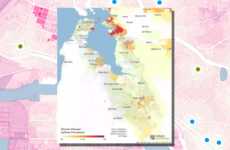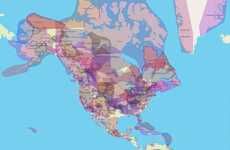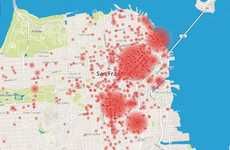
This New York Times Infographic Series Charts Domestic Migration
Rahul Kalvapalle — August 18, 2014 — World
References: nytimes & visualnews
This fascinating New York Times infographic series reveals where the residents of different US states were born. Consisting of 50 painstakingly compiled interactive graphics, the charts document domestic migration patterns since the year 1900, based on census data. Each state-specific infographic uses color-codded ribbons that indicate whether residents of that particular states were born in the same state, migrated from other states or were born outside the U.S.A.
California's infographic shows that while the Golden State has long been the destination of dreamers from other states looking to strike it big, this is no longer the case as residents leave to Eastern destinations.
Meanwhile, states down South -- that have traditionally been largely occupied by people who were born there -- are experiencing significant migration for the first time.
These New York Times infographics aren't just visually interesting to look at, but they reveal clues about states' economic health and cultural status.
California's infographic shows that while the Golden State has long been the destination of dreamers from other states looking to strike it big, this is no longer the case as residents leave to Eastern destinations.
Meanwhile, states down South -- that have traditionally been largely occupied by people who were born there -- are experiencing significant migration for the first time.
These New York Times infographics aren't just visually interesting to look at, but they reveal clues about states' economic health and cultural status.
Trend Themes
1. Domestic Migration Patterns - Opportunities exist for companies to develop tools and platforms that can help analyze domestic migration patterns and offer insights into economic trends.
2. Visual Data Storytelling - Companies can explore the opportunities of visual data storytelling to present complex data in a more engaging, interactive and informative manner.
3. Migration-driven Behavior Analysis - New tools and technologies that can help analyze migration-driven behavior can be a disruptive innovation in industries that are affected by population changes and shifts.
Industry Implications
1. Real Estate - Real estate companies can use data about domestic migration patterns to identify emerging markets and invest in areas that are likely to experience population growth.
2. Marketing and Advertising - Marketing and advertising agencies can leverage the power of visual data storytelling to create more engaging and effective campaigns that resonate with their target audiences.
3. Policy and Planning - Governments and city planners can use migration data to inform policy decisions that affect local communities and shape future infrastructure projects.
0.8
Score
Popularity
Activity
Freshness























